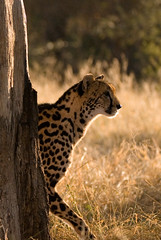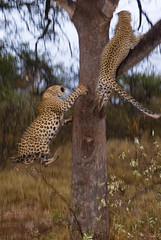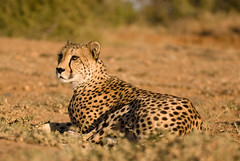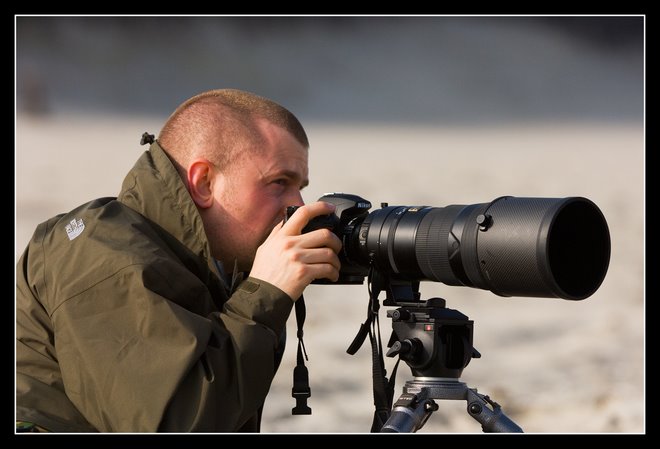I recently came back from a photo safari at
Tshukudu Lodge in Hoedspruit, South Africa, organised by
FotoCampus. In the first of a series of articles about the safari, I thought I would write about the photo gear that I took with me, what was useful, and what was not so useful.....
Due to the current luggage restrictions on airlines, it was necessary to be a little bit careful with what I carried with me. So I decided to purchase a Think Tank Airport International roller case to take my hand luggage on the plane with me. I figured that since my hand luggage would be weighing around 16-18kg, anything I could do to make it look lighter would help. And since rolling 16kg around on wheels looks a lot more effortless than carrying it on your back, that helped my decision.....
So then I was left with the decision of what to take with me on the plane, and what to have in my hold luggage. Obvioulsy my main lenses and camera bodies would stay with me, and I opted to put all chargers, cleaning equipment, batteries, monopod etc in the hold. This way I figured that if my hold luggage were to get lost or delayed, at least I would still be able to shoot, and there would be enough other people there who I could borrow chargers from if necessary.
I packed the following gear:
2x D200 bodies, both fitted with MB-D200 battery grips - I think the battery grip on the D200 makes handling so much better, and makes it a lot easier to take photos in portrait format. Definitely a worth €175 upgrade
200-400mm F/4G VR lens - this was almost permanently attached to one of the D200 bodies, and was used for around 45% of the shots
70-200mm F/2.8G VR lens - this was attached to the second D200 and was also used for around 45% of the shots
The above two lenses are, in my opinion, invaluable on a safari, since they give a good coverage of the range you will likely to be shooting at. 200-400 is especially useful for birding shots, but it is important to support the lens well. Since there was no space in the safari vehicle for a tripod (in fact I didn't take one with me) I had the choice between using a bean bag, or a monopod. I filled the beanbag with around 4kg of sugar beans, and found this to be a perfect solution. The roll bars on the vehicle made a good support, either sitting or standing, and by putting the bean bag on top, I found I could rest the 200-400 lens on the bag and get sharp shots.
The 70-200 can be used hand held, and at a stretch can be fitted with a TC-17e to give a reasonable alternative to the 200-400.
17-55mm F/2.8G lens - Used for some landscape shots, and when I had the opportunity to get closer to some of the animals (jn Tshukudu they have some animals as part of breeding programmes, and it is normally possible to get fairly close to them, albeit with a fence in between. Also good for 'atmosphere' shots of other participants, and for when the elephants charge the vehicle.....
10.5mm F/2.8G fisheye lens - Used a couple of times, but could have been left at home, not really a safari lens. However, due to it's small size, it doesn't cost any space to take it with, so it invariably finds it's way into my bag. Used for a couple of landscape shots.
12-24mm F/4G lens, 85mm F/1.4D lens - Didn't use either of these lenses, next time I will leave them at home....
TC-14e and TC-17e teleconverters - I really expected that I would use my converters, but didn't take a single shot with them. Wouldn't leave them at home, as they are always useful as a last resort.....
SB-800 flash - Used more than I expected to provide fill to darker subjects, or for freezing the movement of some subjects. I used this in conjunction with the Nikon SD-8a battery pack, which supplements the in flash battery power with 6 additional cells, and found this to provide a welcome improvement to flash recycling times.
Monopod - as mentioned earlier, good camera support is vital, and I used my Gitzo 1578L for this
Bean Bag - I took a bean bag that I had purchased for €10 locally, and then filled it with beans once I arrived. Mine is around 25x20 cm, and I found this to be just the right size. If you make your own, you will probably find using a zip to close it works considerably better than velcro or other fastners.
Cleaning kit - My sensor actually remained relatively clean, but I took my Eclipse fluid and sensor swabs with me just in case. I also took a microfiber lens cloth, and a rocket blower to clean the gear at the end of each day
Photo vest - A good photo vest with a number of pockets is useful. Each drive I carried my cameras in my hand, and put all the other accessories, lenses, and flash in the photo vest. There isn't really space to take a camera bag in the vehicle, so best to avoid taking one
Memory - I had 4x 4Gig cards with me, and this was more than enough for my two bodies. At the end of each drive I would copy the contents of the cards to two external 120Gig drives, via my MacBook Pro.
Batteries - I took seven EN-EL3e batteries with me, but found I didn't use more than four in a day shooting.....
All in all, the equipment worked fine, and I was happy with the results that I achieved. I had a couple of issues with the D200 bodies and blinking battery syndrome, but was solved by switching lenses between bodies, and the wheel fell off the Think Tank. However when I returned, Think Tank were very apologetic and are sending me a replacement wheel kit. The problem shouldn't have occurred in the first place, but at least it was rectified through good customer service.
So did I forget anything? I think the gear I took covered pretty much all of the photo opportunities that I had. However I think taking a polarising filter would have been useful, as this would allow for better saturation in some photos. A tripod would have also been useful for some long exposure/night time opportunities, however it's use would have not been possible during the day drives, and would have been a hassle to transport through the airport (and the extra weight would have definitely ended up in having to pay for excess baggage....)









